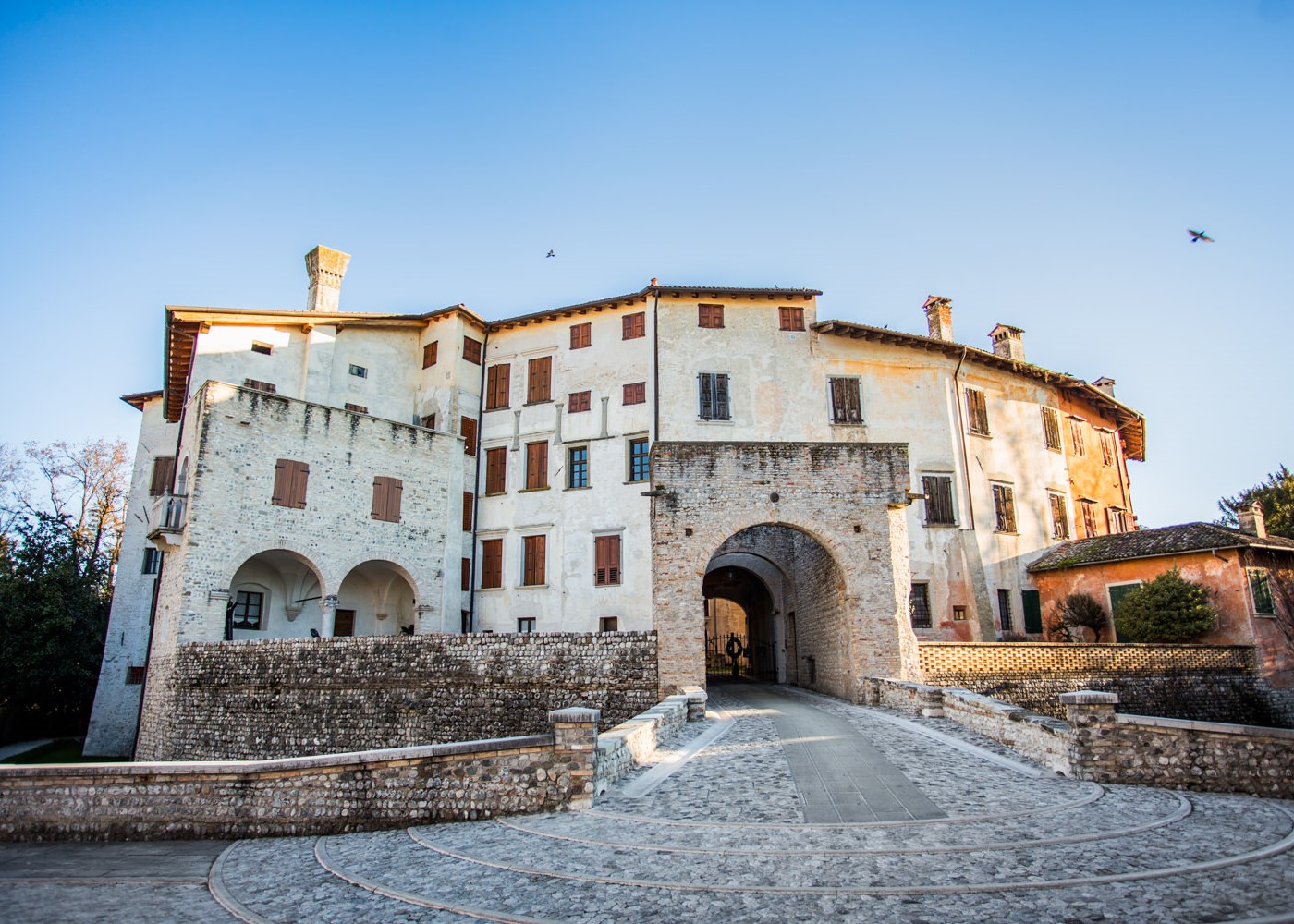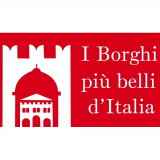
 I borghi più belli d'Italia
I borghi più belli d'Italia
Italian little Italies: Valvasone Arzene. Small ancient world
- WTI Magazine #161 Mar 18, 2023
-

 I borghi più belli d'Italia
I borghi più belli d'Italia
The urban center of Valvasone developed on the right bank of the Tagliamento River in the Friulian plain, near an ancient ford. We begin our visit from the Town Hall, a stately building with an 18th-century appearance that overlooks Piazza Mercato, incorporating earlier medieval structures.
Opposite, Palazzo Martinuzzi-Dulio does not hide its Venetian Renaissance imprint under the 1846 renovation. Turning back, the stately Fortuni palace shows its scenic 17th-century façade set in front of the Church of Saints Peter and Paul, which has been known since 1355, when a hospital for wayfarers existed next to it.
Consecrated in 1497, the new church preserves frescoes by Pietro da Vicenza (1510) that partly cover older 14th-century fresco paintings of which traces remain in the Crucifixion, and a rare, small portable organ from the 17th century.
Taking the street again, note the fine group of arcaded houses with the fresco on the facade (1515) that in popular devotion was supposed to keep the plague away. Returning toward the church, one notices in Via Roma palazzo Pinni, from the late 18th century.
Continuing on we come to the former Dominican convent, one of Valvasone's oldest landmarks: the church, completed around 1355, was flanked by a convent consecrated in 1500 after the sacking by the Turks. Of the ancient complex only part of the cloister has survived; opposite is the brolo overlooking the countryside.
Continuing along the road parallel to the Mulini irrigation ditch, we find a beautiful 16th-century arcaded building and the old Trattoria alla Scala with its stone portal dated 1672 on the keystone.
Finally, here we are in Piazza Libertà, a large space characterized by the presence of the cathedral and a series of buildings that follow an almost circular pattern. After a look at the building that housed the 18th-century spinning mill, let us focus on the cathedral. Commissioned by the citizens and notables of Valvasone in 1449 and consecrated only in 1484, it has a late 19th-century neo-Gothic façade, which fortunately hides treasures from older ages inside, such as the two 17th-century frontals and, above all, the still-functioning organ by Vincenzo de Columbis (1532-38), one of the most beautiful works of art in the whole of Friuli. The pictorial decoration of the doors was entrusted in 1538 to the greatest Friuli painter of the time, Pordenone, but he died the following year without being able to finish the work, so that the doors were completed by his son-in-law, Pomponio Amalteo in 1544. This is the only 16th-century Venetian organ still in existence in Italy. The closed organ doors represent The Harvesting of the Manna. The five chancel scenes are by Amalteo himself.
Leaving the cathedral, on Via Erasmo we encounter Palazzo Flora, of fifteenth-century layout with late eighteenth-century remodeling, and the Casa della Pieve, a Renaissance building that incorporates the fourteenth-century chapel of San Giacomo with traces of frescoes from the period. Nearby, we find one of the most beautiful corners of the village, the 17th-century flyover over the irrigation ditch water, just behind the fine Renaissance palace of Count Eugene. In addition to this building, other notable examples of fifteenth- and sixteenth-century architecture overlook Piazza Castello, such as Casa Trevisan, the vast premises housing the old Trattoria La torre, and the porticoed Palazzo Gandini.
We can then enter the castle. Under renovation, the vast complex that dominates the village square with its bulk appears to be the result of successive stratifications. The first record of a fortification dates back to 1206. In a ground-floor hall decorated with 16th-century friezes is a delightful 18th-century little theater, also included in the restoration project. We can now leave the square through the gate tower and reach the Borgo Alpi -called "of the geese" because of its agricultural vocation- encountering on the way the ancient mill, which used the water from the defensive ditch, and in Largo Piave the seventeenth-century Palazzo Tamburlini with its two long chimneys.
At Borgo delle Oche we end on a high note with a glass of Traminer to taste in the wine cellar that opens onto the vineyards.
The name
Derived from Old German wal (high ground) and waso (meadow), so it means "meadow with high ground."
Genius loci
It really seems like a small old world, this one in Valvasone: close to the majestic, slow-moving river, surrounded by the irrigation ditch that is so much like the countryside of yesteryear, and with its historic, stately but discreet palaces; and the porticoes that preserve the warmth of a handshake, a stolen smile, a whisper at the tavern (curious in Palazzo Martinuzzi is the late 15th-century fresco of two men arguing by spilling a glass of wine on each other). Rising close to a ford of the Tagliamento River, Valvasone has preserved its rural soul grown up around the castle and enclosed in the 16th-century urban dwellings, in the Dominican brolo, the Borgo delle Oche, the small churches and country hamlets. The land, long abandoned, now recalls its faithful: new winegrowers are born and the cooperative that produces the area's finest Montasio cheese endures.
The village dish
Perfect with brovada (turnips macerated for several days in marc), muset, that is, Friulian cotechino, is also served with polenta or enjoyed with brovadin, that is, barley, bean and brovada soup. To stay on the liquid side, there is still sopa, a dish that includes bread, broth, tripe and red wine. Alternatively, radicchio with greaves. Crayfish would remain, but they are rare now. Also traditional is voleson, the homemade pie.
The typical product of the village
Dairy cheese made the old-fashioned way, with unpasteurized raw milk from small stables with cows fed according to tradition. The Cooperative's top product is Erasmo cheese, or Montasio dop. Also worth mentioning are the Doc Grave del Friuli wines, vinegar salami - excellent with toasted polenta - and bread baked with a wood-fired oven.